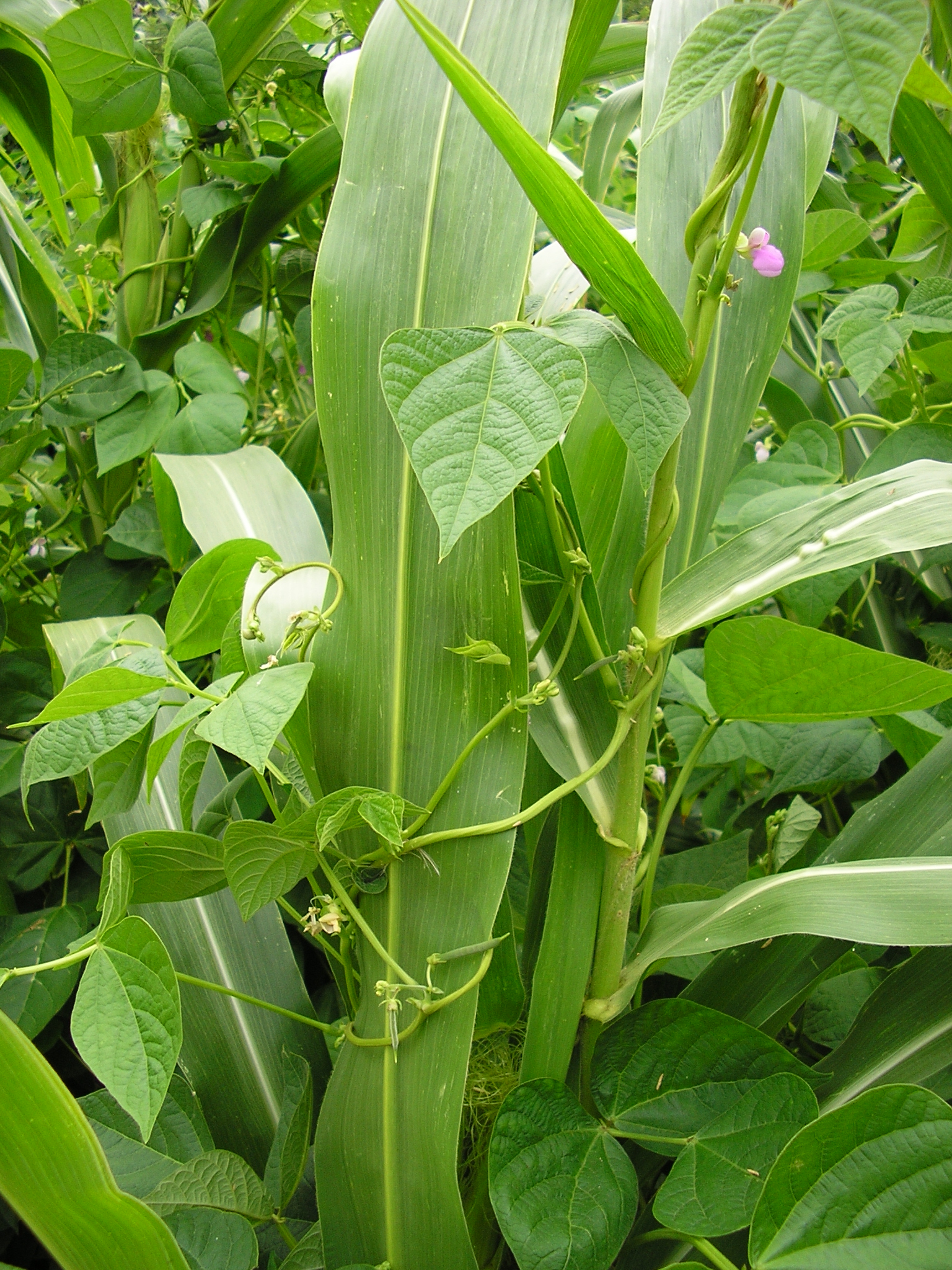Basque ethnography at a glance

Artoak. Labayru Fundazioa Photographic Archive.
Maize (artoa) would be sown in April, immediately after a winter crop of turnip, and harvested in October, right in time for wheat sowing. Seed from selected maize ears (artaburuak) was saved from one year to the next.
In former times seeds would be broadcast by hand and the soil harrowed in order to spread them evenly and cover them. Later on planters started to be used to lay seeds down in rows. Seedlings are to be thinned following germination, so the remaining plants have adequate space for growth. When maize plants are well up, bean seeds can be sown among them, because bean germinates rapidly and would otherwise take away the sunlight maize plants need to prosper. Maize was indeed traditionally, and still is, intercropped with beans, maize stalks serving as poles for the bean plants. Bean sowing was best done by a team of three: one dug the hole, another planted the seed, and a third one covered it.
After a reasonable time any weeds growing around young maize should be thoroughly removed, for they adversely affect crop development. Weeding between rows was performed with a small five-tooth plough drawn by a horse or, most frequently, by a single ox under yoke. Then each plant was hand-hoed and earthed up, the soil dragged away from them during ploughing being piled around their stems.

Maize intercropped with beans. Luis Manuel Peña. Labayru Fundazioa Photographic Archive.
Maize needed weeding several times, depending on terrain and growth rate of grass and weed. It was a thankless task, as attested by numerous popular sayings. In the words of an informant, should he, as a lad, be hoeing without much interest or care, his grandfather would tell him: Ai mutil, jantzan hobeto dakik artajorran baino! ‘Oh boy, you dance better than you weed!’.
Beans are harvested in July and maize in October. The harvesting of maize was done manually: fully mature ears were collected and the dried stalks (lastoak) rooted out with a sickle and arranged in stacks (lasto-metak) out in the field. Stalks were shredded and used for feeding the cattle over the winter.
Cartloads of maize ears were hauled to the porch of the farmhouse for their husks (kapaxak) to be removed and taken up to the loft in large baskets for storage.
The husked ears were introduced in a sac and beaten with a mallet. In the evening the family, and more particularly the female members of the household, gathered by the fireside to thresh the kernels left on the cobs (txokorrak) while the grandmother said the rosary. Threshing machines arrived later and considerably reduced the drudgery of the chore.
Maize bread making shall be the subject of a future post.
Segundo Oar-Arteta – Etniker Bizkaia – Etniker Euskalerria Groups
Translated by Jaione Bilbao – Ethnography Department – Labayru Fundazioa
Reference for further information: Agriculture, part of the Ethnographic Atlas of the Basque Country collection.


[…] is a follow-up of a previous post, published on 26 April 2019, dedicated to the cultivation and harvesting of […]